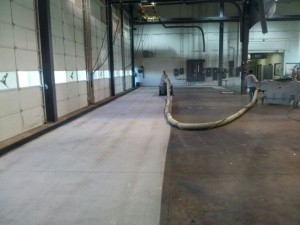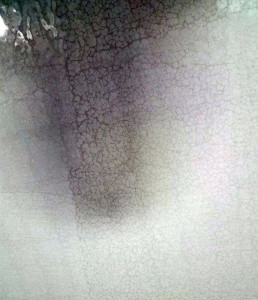There are a number of factors that can contribute to a successful floor coating installation. Choosing the right polymer flooring products for your unique application is an obvious one. Proper concrete substrate preparation also plays an important role in a successful project outcome. It’s pretty easy to attribute a non-performing floor system to improper product choice. It is also fairly easy to connect a peeling coating to improper substrate preparation.
But, there are other environmental factors that can impact your floor coating project that you might not be well aware of. The truth is polymer coatings (such as epoxies and polyurethanes) can be affected by a number of environmental factors, including:
- Ambient air temperature
- Presence of CO2 gas
- Relative humidity
- Water vapor emission from substrate
Though not always top-tier concerns, these factors can certainly affect a polymer floor coating installation. Each polymer coating is slightly different, and environmental factors can affect how a polymer product components cure. The general rule of thumb is to apply coatings at 70 degrees F and 35% relative humidity. Deviating too much from the manufacturer’s recommended application temperatures and environmental conditions can impact the cured products’ general performance attributes, including:
- Hardness
- Cure time
- Chemical resistance
- Adhesion
- Aesthetics
One specific problem that can occur due to environmental conditions is a “phenomenon” known as amine blush. When epoxy coatings are applied in adverse conditions (usually high humidity), they can cure with an unintended hazy or greasy finish that looks terrible and can exhibit unfavorable performance attributes. This finish is referred to as Amine Blush, and is a chemical reaction that can occur when environmental conditions are favorable for the amine curing agent on the surface of the coating to react with carbon dioxide and moisture in the atmosphere to form a carbamate. Besides looking bad, amine blush can negatively affect an epoxy coating’s:
- Cleanability
- Stain resistance
- Suface texture
- Gloss
- Adhesion of subsequent topcoats
You can learn more about how amine blush can impact a flooring project by downloading our white paper on the subject.
When in doubt about the proper environmental conditions necessary for your flooring project, it is always best to refer to the flooring manufacturer’s printed technical data sheets prior to a DIY installation. Working with a manufacturer-recognized and professional installation contractor is always recommended for the best possible outcome.
Do you have an industrial floor project on the horizon?
Our Industrial Flooring Self-Assessment Tool can help you determine the ideal solution for your unique application!
- A Faster Cure for Flooring Needs: Polyaspartics in Action - April 8, 2025
- The Case for Epoxy Mortar in Manufacturing - April 8, 2025
- Epoxy Mortar Flooring: Built for Heavy-Duty Performance - March 29, 2025




